Before we can find the perimeter, let’s discuss what perimeter is. Perimeter is the measurement around the outside of a shape. This is different than area, which is the measurement of space inside a shape. There are different ways to find perimeter depending on the shape and skills being taught. When first learning perimeter students can use counting or addition, but as their skills progress they may want to move on to multiplication.
Use the sections below to learn how to find the perimeter of a square, rectangle, and triangle. Each example has an image and description to help. These can be used as a reference for teachers and students.
The Perimeter of a Square
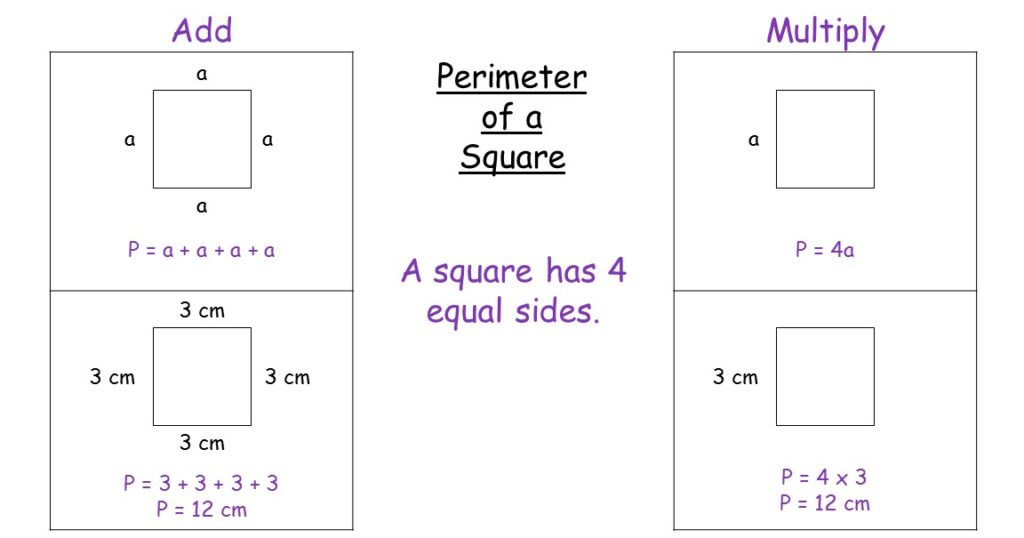
P = perimeter, a = side
P = a + a + a + a
A square has four equal sides. To find the perimeter of a square, add all of the sides together. If only one side is labeled, fill in the missing sides and then add them together.
P = 4a
Multiplication is another strategy to find the answer. Each side is the same length and there are four sides, so multiply one side times four. Depending on the skill level this may be a faster option than adding four numbers together.
The Perimeter of a Rectangle
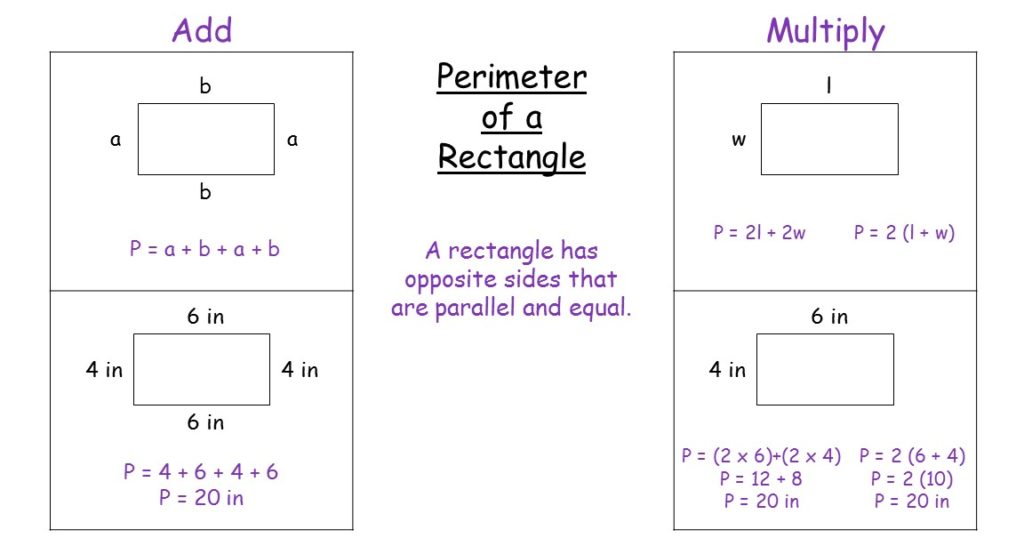
P = perimeter, a = width, b = length
P = a + b + a + b
A rectangle has opposite sides that are parallel and equal. One way to find the perimeter of a rectangle is to add all of the sides together. Using the example above, you can also do an extra step to make it easier. First, add the two sets of sides separately and then put them together. For example, 4 + 6 = 10 and 4 + 6 = 10. Then do 10 + 10 = 20.
P = perimeter, w = width, l = length
P = 2l + 2w or P = 2(l+w)
Depending on the grade level and skills being taught, some kids may naturally want to multiply the sides to find the answer. There are two different ways this can be done in the example above. You can multiply and then add or add and then multiply. Some teachers may have a personal preference they would like students to use but it’s helpful to know both ways.
The Perimeter of a Triangle
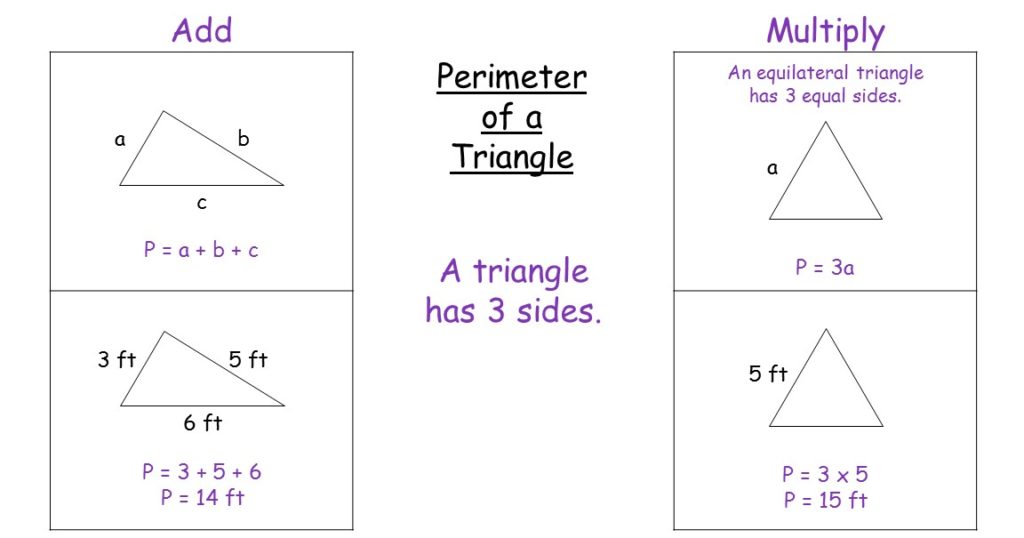
P = perimeter, a = side, b = side, c = side
P = a + b + c
There are three types of triangles: equilateral, isosceles, and scalene. An equilateral triangle has three equal sides. An isosceles triangle has two equal sides. A scalene triangle has no equal sides. For all three kinds of triangles, you can add the sides together to find the perimeter.
P = perimeter, a = side
P = 3a
To find the perimeter of an equilateral triangle, you can also multiply one side by 3. In the example above, one side equals 5 feet. Since there are three sides multiply 3 x 5 = 15.
Finding Perimeter
Are you looking for no prep perimeter activities? There are so many fun ways for kids to practice these skills. Choose from worksheets, digital activities, projects, and a FREE game. Click each resource below to learn more.


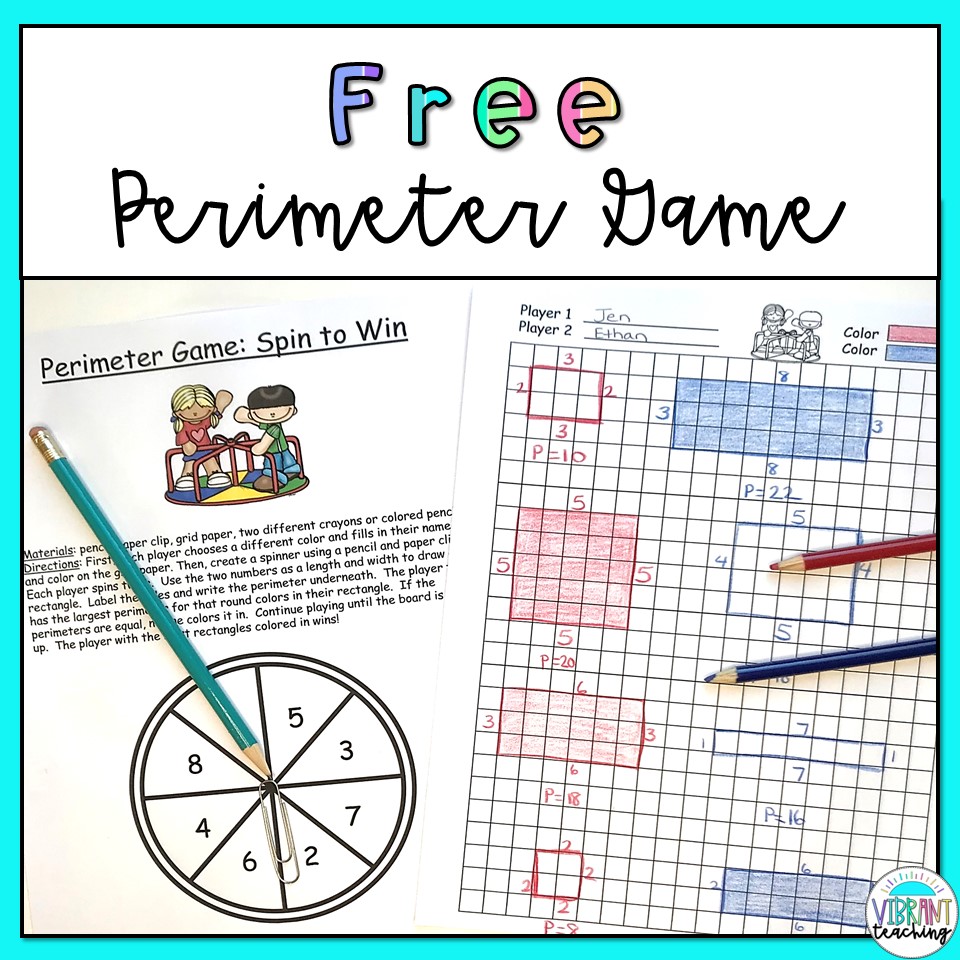
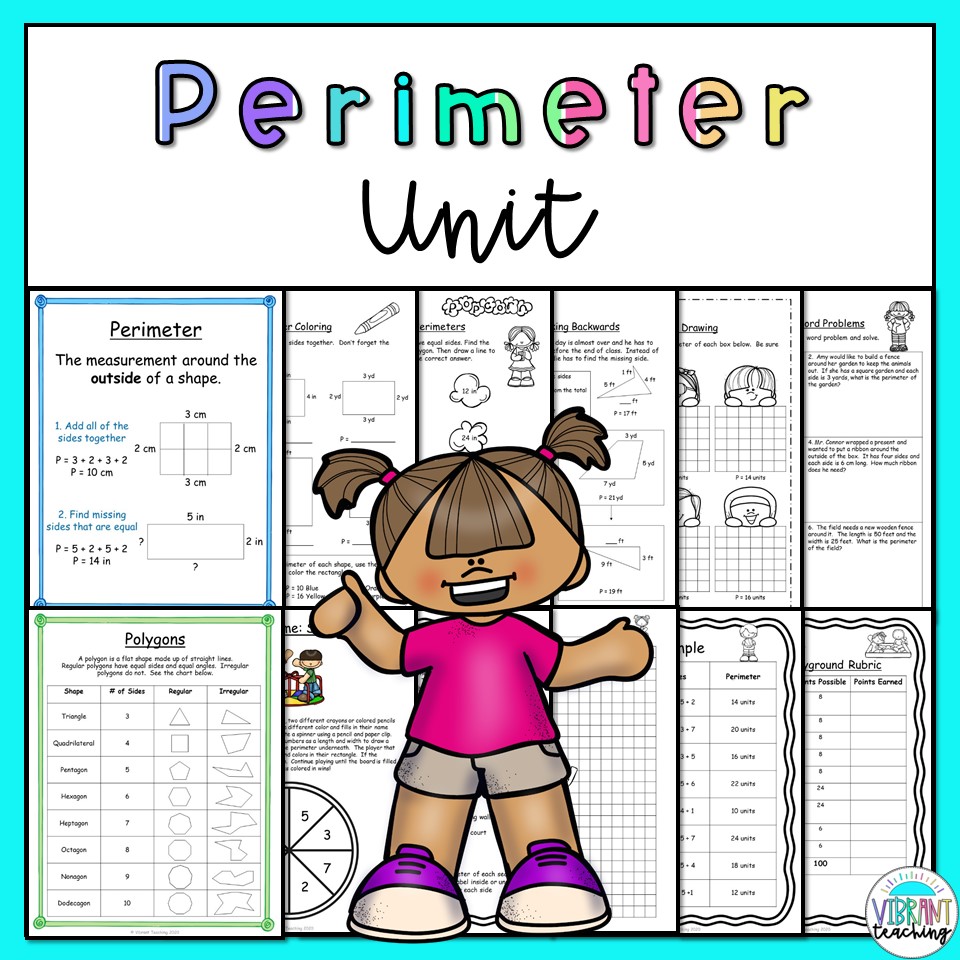
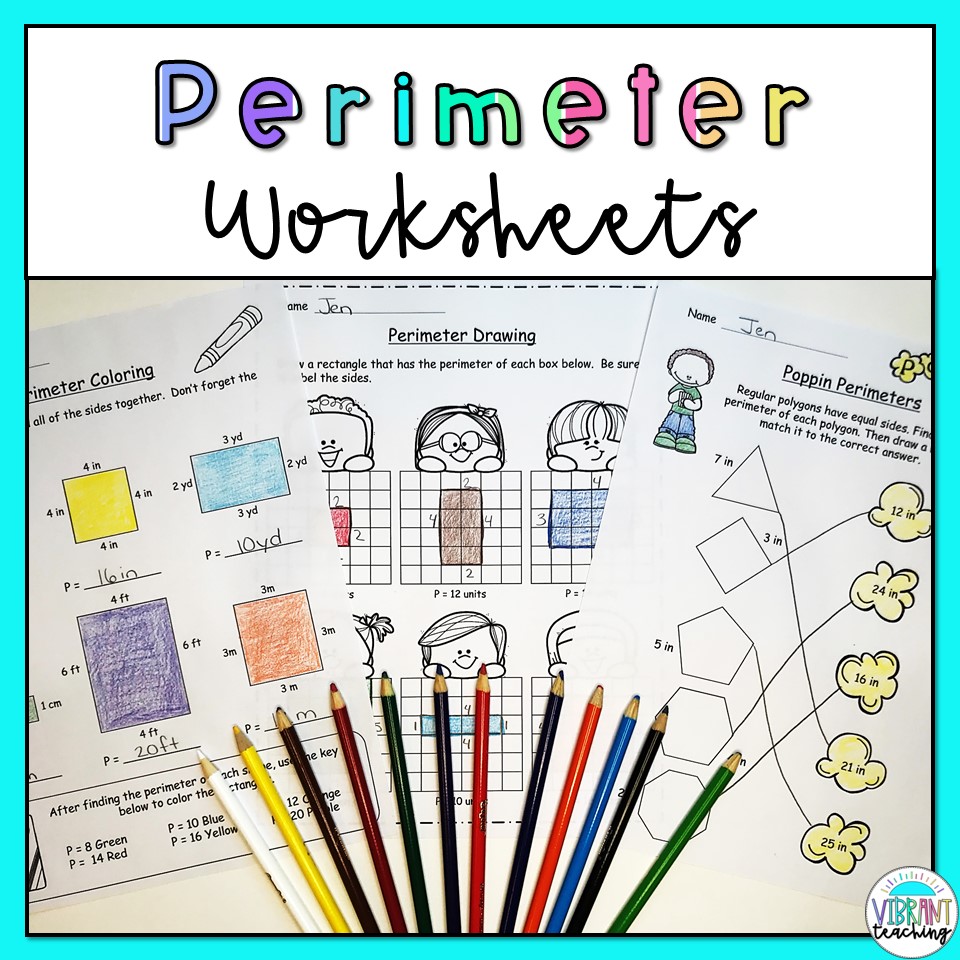

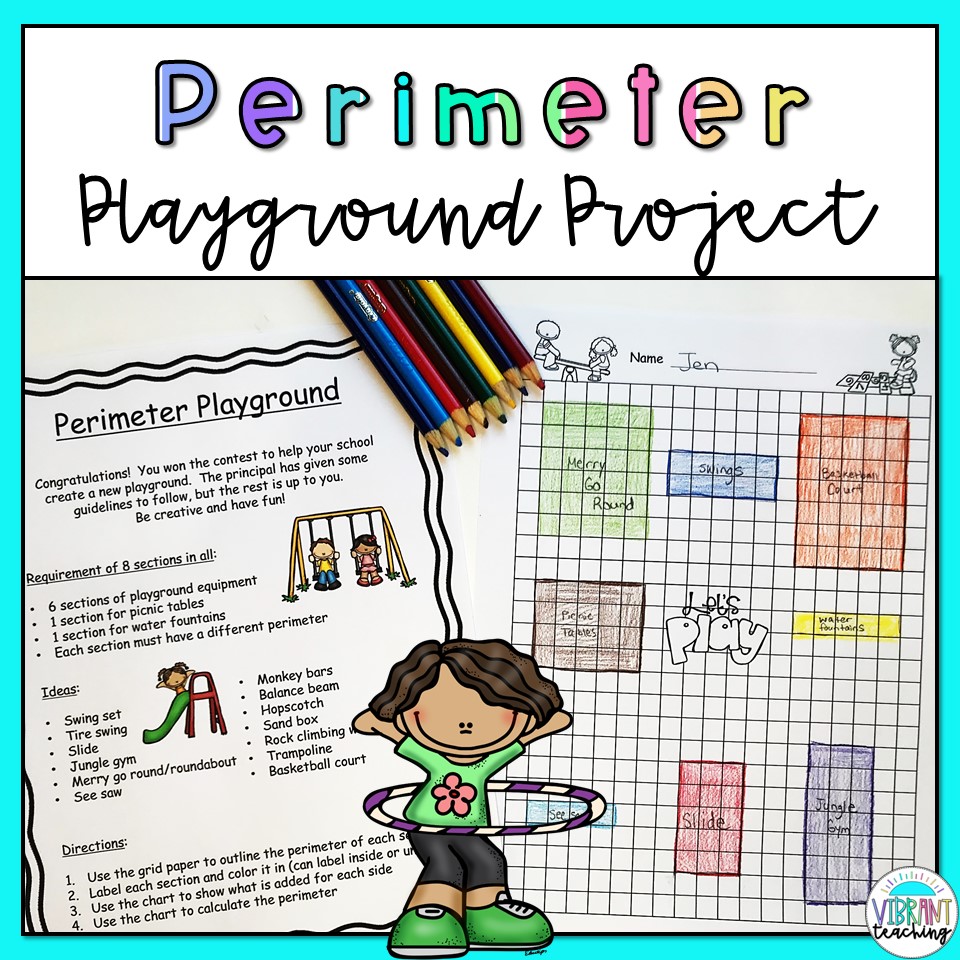




No Comments